Your Child's Hospital Journey
Anterior Knee Pain
This page addresses pain in the front and centre of the knee. Pain located in the upper shinbone area just below the knee cap is a different condition and discussed on the page called Osgood Schlatter's disease.
Anterior (meaning front) knee pain is common with a variety of causes. The term Anterior knee pain is sometimes used along with Patellofemoral pain syndrome or Chrondromalacia Patellae. It is more common in Teenagers but can occur at any age. In most cases it is present in both knees but often one side is worse than the other.
Adolescent anterior knee pain is not usually caused by a physical abnormality in the knee, but by overuse or a training routine that does not include adequate stretching or strengthening exercises. It can also be caused by muscle imbalances and/or altered lower limb bio-mechanics. In most cases, simple measures like rest, over-the-counter medication, and strengthening exercises will relieve anterior knee pain and allow the young athlete to return to his or her favourite sports.
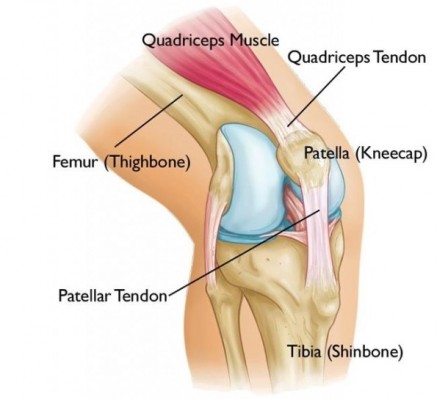
Causes
It can be difficult to pinpoint a specific cause of anterior knee pain and it is often a combination of factors. The complex anatomy of the knee joint, which allows it to bend while supporting heavy loads, is extremely sensitive to small problems in alignment, activity, training, and overuse.
Factors that may contribute to adolescent anterior knee pain:
- Imbalance of thigh muscles (quadriceps and hamstrings) that support the knee joint.
- Tight quadriceps and hamstring muscles.
- Problems with alignment of the legs between the hips and the ankles.
- Using improper sports training techniques or equipment.
- Changes in footwear or playing surface.
- Overdoing sports activities, or changes in the type of training.
Symptoms
Anterior knee pain commonly begins gradually as a dull achy pain. It is frequently brought on by activity. Other common symptoms include:
- Pain may be aggravated by particular activities such as walking, running (especially downhill), stairs (especially going down stairs), squatting and when getting up after prolonged sitting.
- Pain during activities that repeatedly bend the knee (jumping, squatting, running, and other exercise involving weight-lifting)
- Pain related to a change in activity level or intensity, playing surface, or equipment.
- If the pain is specifically at the bony part of the shin bone below the knee see the page on Osgood-Schlatter's Disease.
Treatment
The treatment will depend on the underlying cause. However, conservative treatment is usually effective and most patients will not require surgical intervention. Management may include:
- Avoiding the trigger activity if appropriate. This may be all that is needed
- Simple analgesics, including non-steroidal anti-inflammatory drugs (NSAIDs), may help to relieve discomfort.(speak to your Pharmacist or GP).
- Modification of training, quadriceps strengthening, hip muscle strengthening and core strength improvement. Referral to a physiotherapist is therefore often appropriate.
- Supportive footwear is important.
- Ice. Applying ice after physical activity may relieve some discomfort. Do not apply ice directly to the skin. Use an ice pack or wrap a towel around the ice or a package of frozen vegetables. Apply ice for about 20 minutes at a time.
Physiotherapy
Your Child's GP may recommend a visit to a physiotherapist who can develop an exercise program to improve your thigh muscle flexibility and strength.
Your Child's Physiotherapist will examine their knee to determine the cause of pain behind and rule out other problems. He or she may ask you to stand, walk, jump, squat, sit, and lie down.
During the physical examination, the physiotherapist will also check:
- Alignment of the lower leg and the position of the kneecap
- Knee stability, hip rotation, and range of motion of knees and hips
- The kneecap for signs of tenderness
- The attachment of thigh muscles to the kneecap
- Strength, flexibility, firmness, tone, and circumference of front thigh muscles (quadriceps) and the back thigh muscles (hamstrings)
- Tightness of the heel cord and flexibility of the feet
Some exercises that may help anterior knee pain:
Straight leg raise
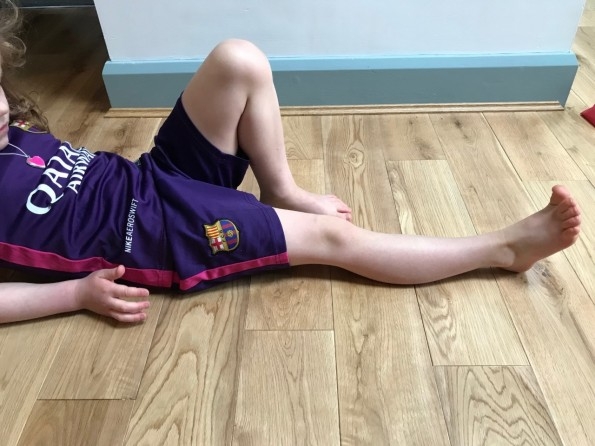
The child lays back propped on their elbows. The affected knee is straight and the other is bent up for support.
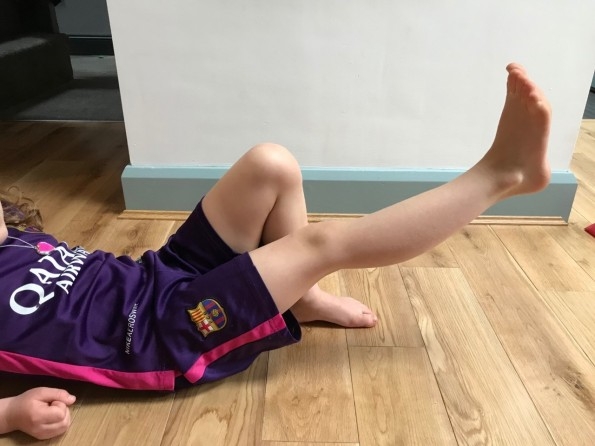
Keeping the knee straight the child slowly lift the leg up level with the bent knee. Hold for 1-3 seconds then slowly lower. Repeat up to 10 times building up to three sets of 10.
Inner range quads
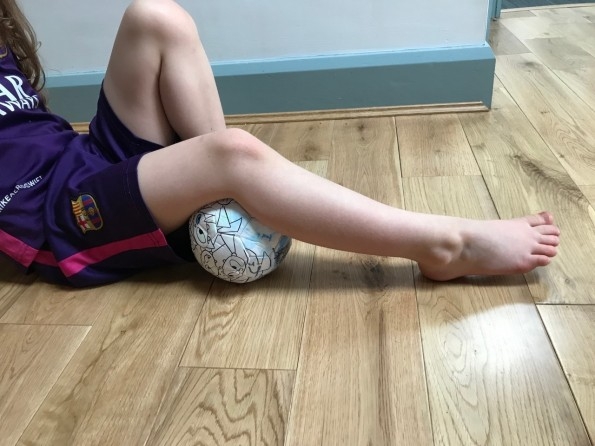
The knee is in a bent position over a ball or cushion.
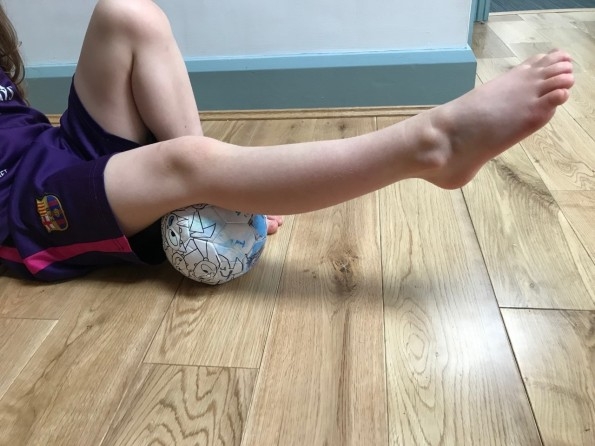
The child then straightens the knee lifting the foot from the ground. Hold the knee straight for 1-3 seconds then slowly lower. Repeat 10 times building up to three sets of 10.
Wall slides
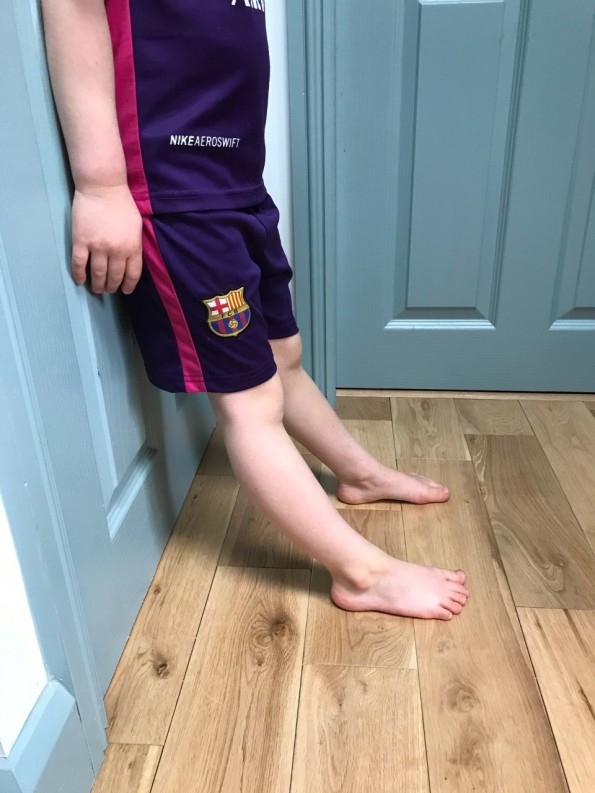
The child leans against a wall with their feet hip width apart and ahead of their knees not underneath (see picture).
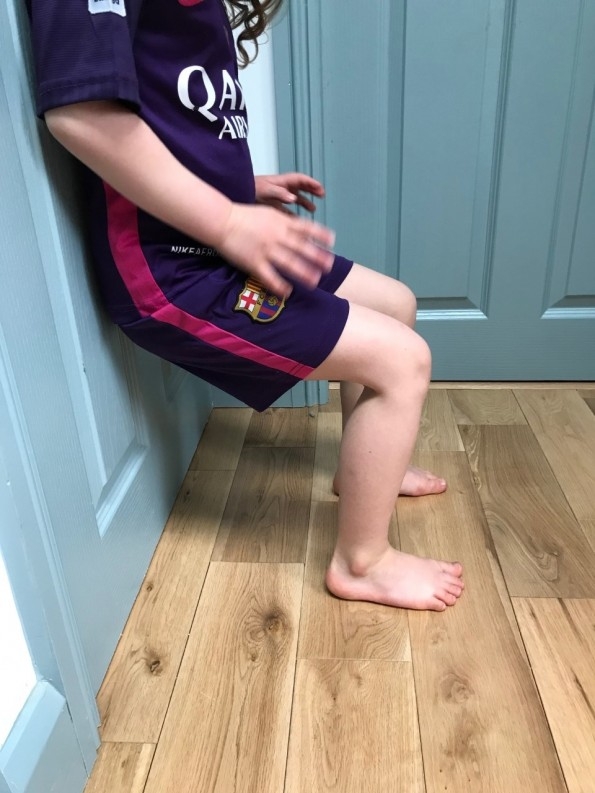
The child then slowly slides down the wall, bending their knees. They should be able to see their toes throughout the movement. If they cannot then their feet should be further away from the wall. They should aim for the knees to be at 90 degrees however if this is painful they should only slide down as far as is comfortable. Hold for 3-5 seconds and then return to the starting position. Repeat 10 times building up to three sets of 10.
Quads stretch
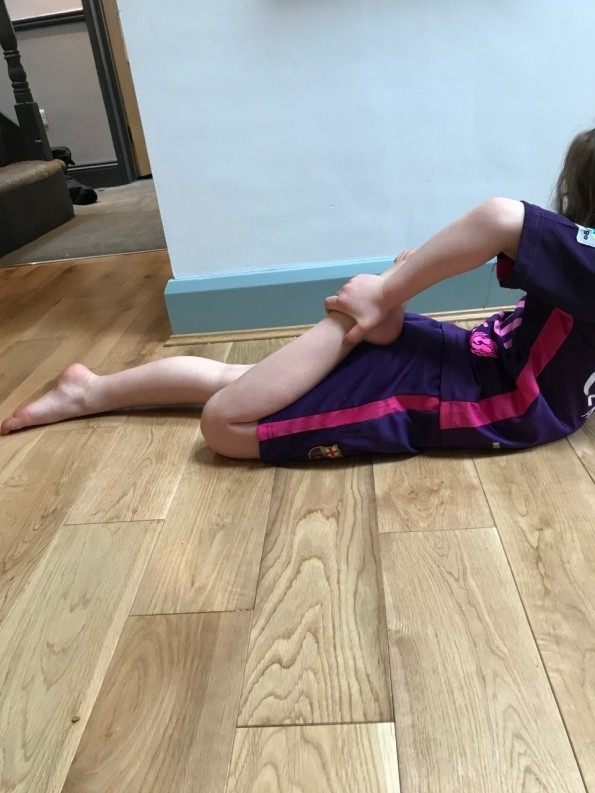
Laying on their tummy, knees together the child takes a hold of their foot and brings the heel to their bottom by bending their knee.
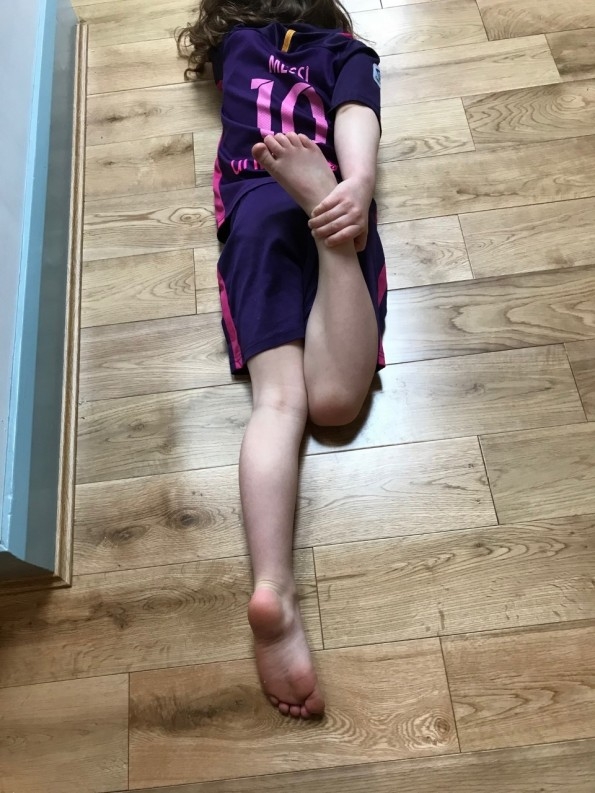
This should not be painful, only a stretch should be felt. Some children will not manage to get their heel to touch their bottom. They should bend their knee until a stretch is felt at the front of the thigh. Hold the stretch for 30 seconds and repeat 3 times.
Hamstring Stretch
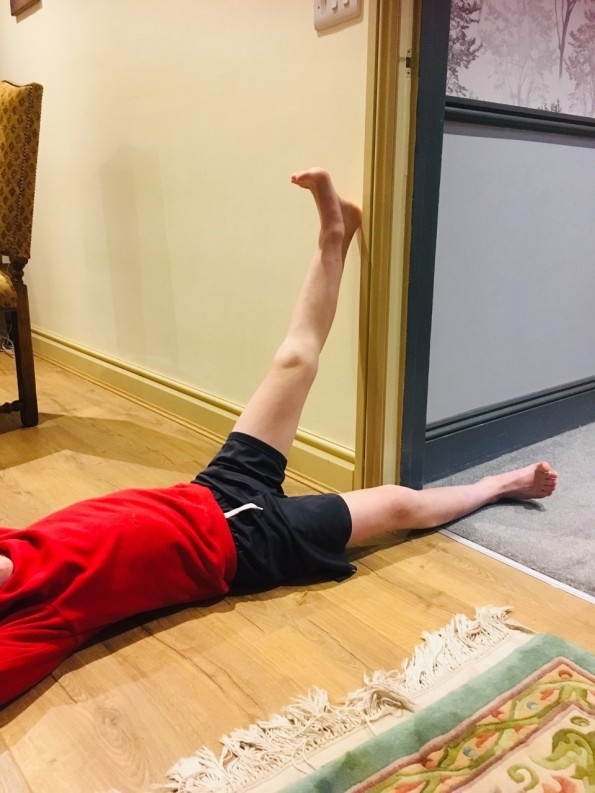
There are lots of different techniques to stretch the Hamstring muscle (located at the back of the thigh). One way is for the child to lay on the floor through a doorway. One leg rests on the floor through the doorway in a straight position. The other is propped up the wall with the knee straight (see picture). A stretch should be felt at the back of the thigh. If no stretch is felt then the leg should be propped further up the wall by shuffling closer to the door frame. If the stretch is too strong then the child should shuffle back away from the doorway so the leg is propped at a lower level on the wall. The child can lay in this position for 5 minutes then change legs.

